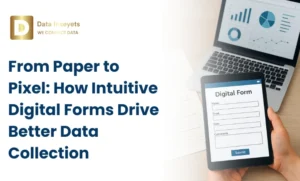
When systems do not integrate, a substantial number of issues occur. Disconnected systems cause data silos, double entries, and missing information. As a result, mistakes occur, decisions are delayed, and employees are frustrated.
Without proper system connectivity, teams waste time hunting down data or fixing errors instead of focusing on their actual tasks. This decreases their productivity and disrupts reporting in a way that makes it harder to make informed decisions.
Data integration addresses these challenges by connecting your systems. When everything works together, it becomes easier to share and access information. Tools like Power BI can help turn that connected data into clear insights, making it simpler to track progress and plan ahead.
By improving system connectivity, you can create a smoother, more efficient workflow that boosts productivity and reduces chaos.
System integration means connecting different software, databases, and applications so that they can share information seamlessly. It breaks down data silos and improves business connectivity by making sure every system works together instead of separately.
There are different levels of integration, data, application, and process. An integral part of this, like a bridge for systems to exchange data without manual work, are Application Programming Interfaces (APIs). This sort of API integration helps create smooth and efficient enterprise integration.
Once everything is connected, tools like Power BI can bring all that data together in one place. It shows a clear picture of your business, helping you make faster and smarter decisions.
Integrating systems together sounds simple, but it often comes with a few bumps along the way. Many organizations are still using legacy systems or old software that do not integrate well with newer tools. These system integration issues can make the process slow and complicated.
There are also worries about security, compliance, and data synchronization. When systems don’t sync properly, you might end up with duplicate or outdated data. On top of that, poor planning can turn an integration project into chaos.
For example, if a company is trying to connect its CRM, ERP, and analytics tools, it may struggle at the beginning. If you jump to the integration process without a well-conceived plan and standard processes, the project can quickly become messy. These data integration challenges show why careful setup and coordination are so important for smooth integration.
APIs make it easier for different systems to talk to each other. We could think of them as digital bridges that allow smooth data exchange between apps, databases, and software. With API integration, you no longer have to move data manually. Instead, systems will automatically share the data and keep everything connected and up to date.
There are a few common types of APIs like REST, SOAP, and GraphQL. Each one helps in its own way, but the goal is the same: better system connectivity and software interoperability. APIs make integrations faster, more flexible, and easier to scale as your business grows.
For example, using API-based connections between your CRM, ERP, and Power BI dashboards lets all your data flow into one place. This kind of setup gives you unified reporting and a complete view of your business without extra effort.
Step 1: Audit your existing systems and data flows; understand what you are currently using and how the data flows.
Step 2: Set clear objectives and decide what needs to be integrated and for what purposes.
Step 3: Choose the right integration method (point-to-point, middleware, API-based, or data warehouse).
Step 4: Use automation and monitoring tools to keep the integration process smooth.
Step 5: Test before scaling, and and fix issues early for better data management.
Use Power BI to bring all your connected data together. It helps you visualize and check your data quality, ensuring seamless connectivity across all systems.
A well-connected system brings big improvements to how a business runs. With strong system connectivity, you get real-time data visibility and reporting, so decisions are based on facts, not guesses.
It also removes the need for manual data entry, saving time and cutting down on errors. Teams can work together more easily, sharing information without switching between tools. This boosts collaboration and digital efficiency.
When systems are unified, customers benefit from it too, as services become faster and smoother. For example, Power BI can pull data from multiple connected systems to show all important metrics in one dashboard. These are just a few of the many data integration benefits that come with real-time analytics and a connected ecosystem.
Solution: Start with small steps, test integrations, and visualize with tools such as Power BI to make sure clean data flow. Following these system integration best practices improves data governance and keeps your project on track.
The future of data integration trends is all about smarter, faster connections. Intelligent integration platforms and AI-driven tools are simplifying how we map and move data between systems. More businesses are using low-code or no-code tools to set up integrations quickly while reducing intensive technical work. Cloud-first and API-first approaches are becoming standard, making systems more flexible and ready for growth.
The use of tools such as Power BI will become more significant in providing real-time insights and predictive analytics. This is because interlinking all systems helps the companies to make faster decisions and keep up with digital transformation. The API future looks promising for seamless, automated, and smarter integrations.
Seamless integration is the key to better system connectivity and smoother business operations. Companies that connect their systems experience better visibility, speed and agility, which in turn help to work smarter and respond faster. With Power BI integration, all your data comes together in one place, giving a complete view for smarter decisions. Partnering with experts like Data Inseyets can help create a fully connected business without the chaos.
© 2025, Data Inseyets-All Rights Reserved.